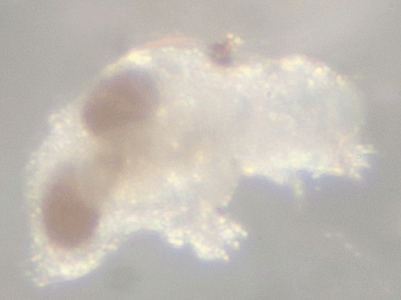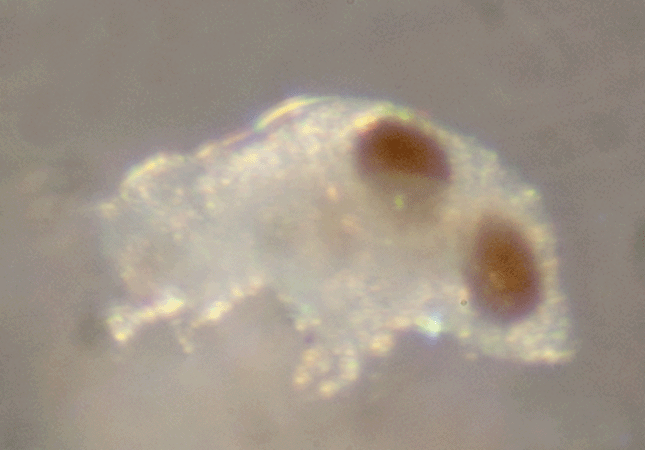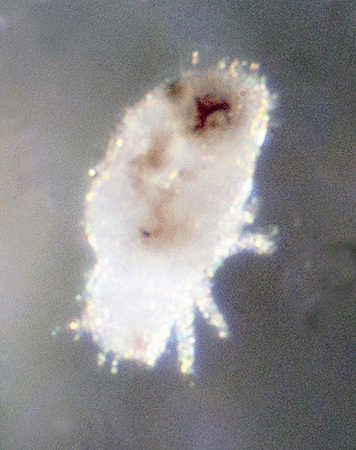Phylum Tardigrada (Waterbears / Moss Piglets) in the Christopher B. Smith Preserve
Tardigrade Characteristics: All tardigrades are considered aquatic because they must be surrounded by at least a film of moisture in order to be active, however they can remain alive in a dormant state if the habitat dries out. Tardigrades can survive extreme environments: temperatures of -200˚ to +150˚, and extremely high and low pressures. They survive by going into a survival state in which a protective sugar moves into the cells and replaces lost water. Tardigrades can survive without food or water for more than 10 years, and then rehydrate, eat, and reproduce. Without dormant periods, they normally live 3 to 30 months.
They are tiny animals that are short, plump, cylindrical, and bilaterally symmetrical. The body is segmented. The five segments include a head, three body segments each with a pair of legs, and a caudal segment with a pair of legs that point posteriorly. The head usually has a pair of small eyespots. The mouth consists of a sucking tube and a pair of stylets that are dagger-like. The pharynx is a muscular bulb. Each of its 8 legs has four or more hooked claws. Tardigrada means "slow stepper," however when this animal is in a moist environment it can move fairly quickly by pulling itself along over the substrate by its claws.
In size, tardigrades are .5 mm to 1.2 mm when fully grown. They reproduce both asexually and sexually.
There are more than 900 identified tardigrade species. Classification is often determined by the shapes of the claws. Tardigrades live in almost every habitat on Earth. Terrestrial forms live in a film of water on lichens and mosses, in sand dunes, soil, sediments, and leaf litter.
Interactions in the Smith Preserve: Tardigrades feed on fluids of plant cells, bacteria, algae, and small invertebrates. They are preyed upon by nematodes, other tardigrades, mites, spiders, insect larvae, parasitic porotzoa, and fungi.
|
© Photographs and text by Susan Leach Snyder (Conservancy of Southwest Florida Volunteer), unless otherwise credited above.

 On March 4, 2015, leaf litter was removed from under a
On March 4, 2015, leaf litter was removed from under a  Because the photographs do not show much clarity, identification of the class, order, family, genus and species is probably impossible.
Because the photographs do not show much clarity, identification of the class, order, family, genus and species is probably impossible. 
